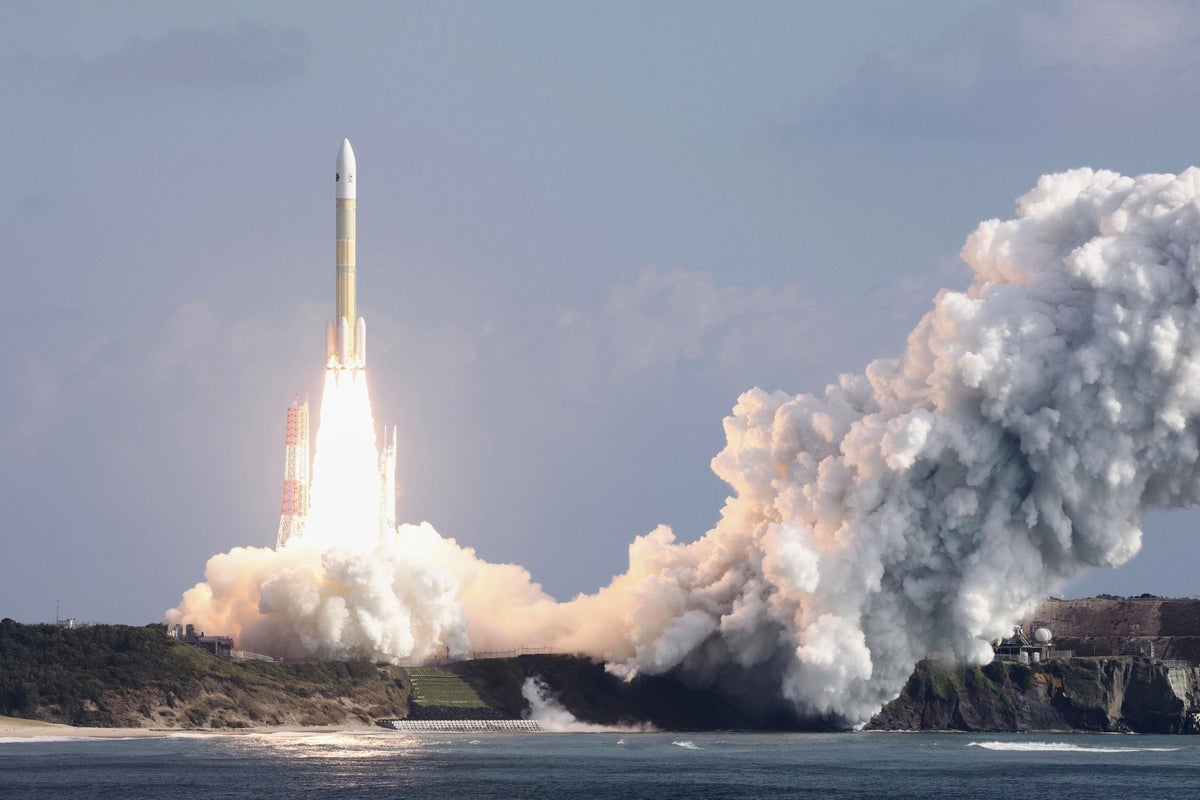Your support helps us to tell the story
From reproductive rights to climate change to Big Tech, The Independent is on the ground when the story is developing. Whether it’s investigating the financials of Elon Musk’s pro-Trump PAC or producing our latest documentary, ‘The A Word’, which shines a light on the American women fighting for reproductive rights, we know how important it is to parse out the facts from the messaging.
At such a critical moment in US history, we need reporters on the ground. Your donation allows us to keep sending journalists to speak to both sides of the story.
The Independent is trusted by Americans across the entire political spectrum. And unlike many other quality news outlets, we choose not to lock Americans out of our reporting and analysis with paywalls. We believe quality journalism should be available to everyone, paid for by those who can afford it.
Your support makes all the difference.Read more
Japan‘s space agency on Sunday successfully launched its new flagship H3 rocket carrying an unmanned cargo spacecraft for its first mission to deliver supplies to the International Space Station.
The Japan Aerospace Exploration Agency said the HTV-X1 spacecraft successfully lifted off atop the No. 7 H3 rocket from Japan’s Tanegashima Space Center in southern Japan.
The spacecraft was separated and placed into a planned orbit, JAXA said. If everything goes smoothly, it is expected to arrive at the ISS in a few days to deliver supplies. Japanese astronaut Kimiya Yui, currently at the ISS, is set to catch the craft with a robot arm in the early hours of Thursday.
The HTV-X is the successor to JAXA’s unmanned H-II Transfer Vehicle known as Kounotori, or stork in Japanese, which flew nine missions to the ISS between 2009 and 2020.
The new freighter can carry a bigger payload and supply power during flight, enabling transport of cells and other lab samples that requires storage in low temperature.
The HTV-X is designed to be connected to the ISS for up to six months to deliver supplies and retrieve waste from the ISS, then conduct technical missions while making an orbital flight after leaving the station, this time for three months.
H3 rocket replaces Japan’s long beloved mainstay H-2A rocket, which made its final flight in June, as a new flagship model designed to be more cost competitive in the global space market.
Japan sees a stable, commercially competitive space transport capability as key to its space program and national security.
The H3 has so far made six consecutive successful flights after a failed debut attempt in 2023, when the rocket had to be destroyed with its payload.

